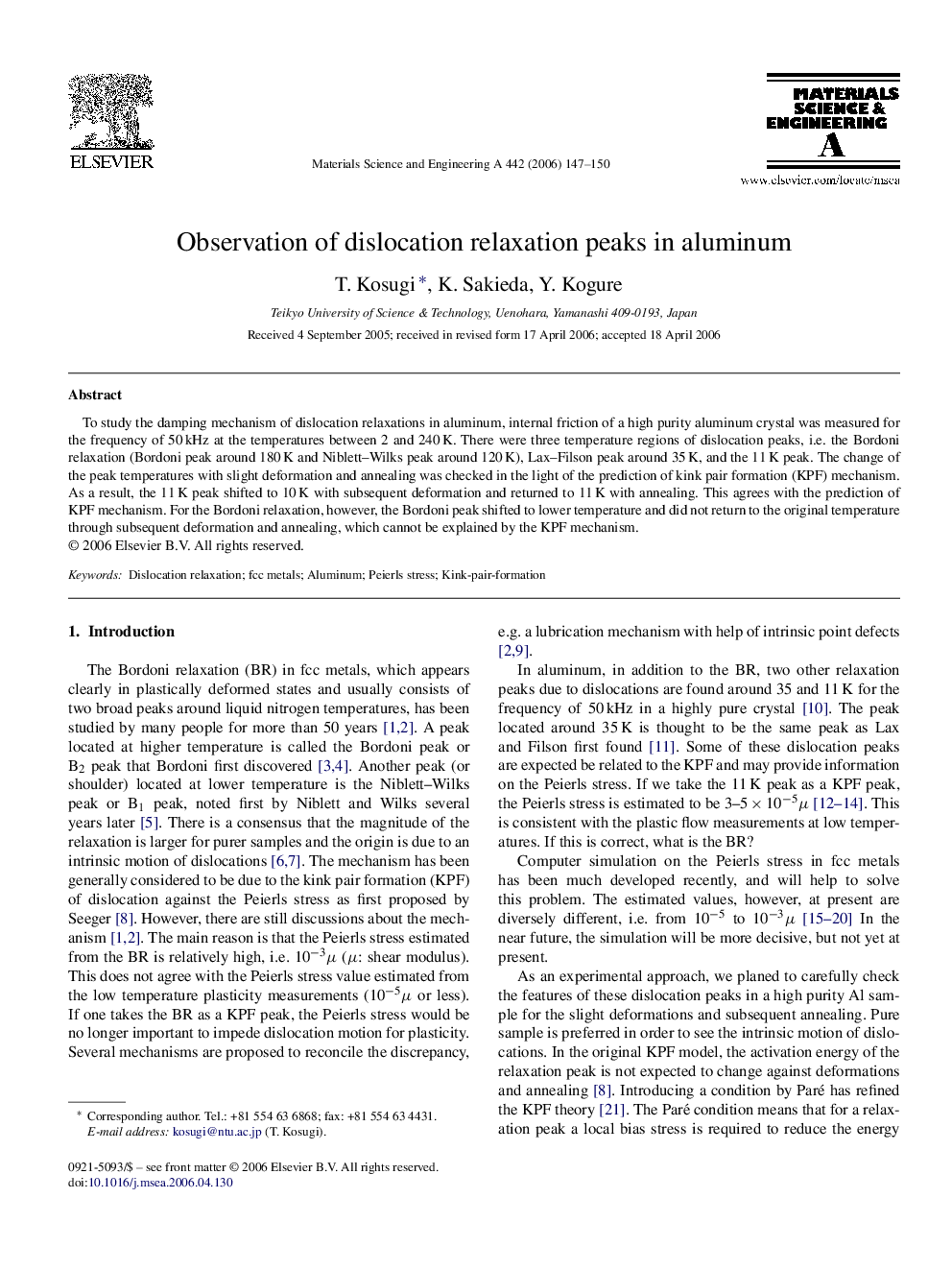| Article ID | Journal | Published Year | Pages | File Type |
|---|---|---|---|---|
| 1584630 | Materials Science and Engineering: A | 2006 | 4 Pages |
Abstract
To study the damping mechanism of dislocation relaxations in aluminum, internal friction of a high purity aluminum crystal was measured for the frequency of 50Â kHz at the temperatures between 2 and 240Â K. There were three temperature regions of dislocation peaks, i.e. the Bordoni relaxation (Bordoni peak around 180Â K and Niblett-Wilks peak around 120Â K), Lax-Filson peak around 35Â K, and the 11Â K peak. The change of the peak temperatures with slight deformation and annealing was checked in the light of the prediction of kink pair formation (KPF) mechanism. As a result, the 11Â K peak shifted to 10Â K with subsequent deformation and returned to 11Â K with annealing. This agrees with the prediction of KPF mechanism. For the Bordoni relaxation, however, the Bordoni peak shifted to lower temperature and did not return to the original temperature through subsequent deformation and annealing, which cannot be explained by the KPF mechanism.
Keywords
Related Topics
Physical Sciences and Engineering
Materials Science
Materials Science (General)
Authors
T. Kosugi, K. Sakieda, Y. Kogure,
